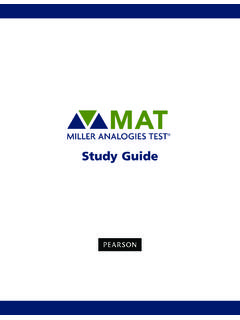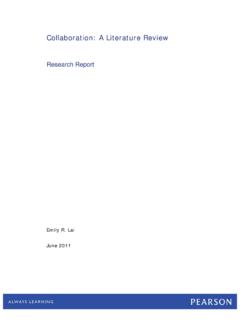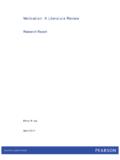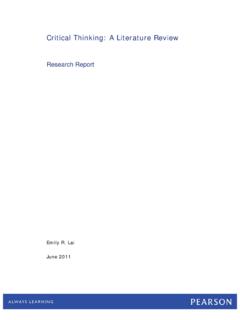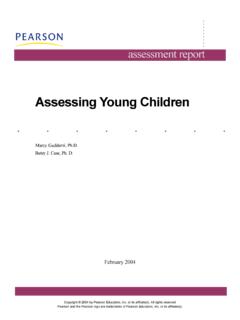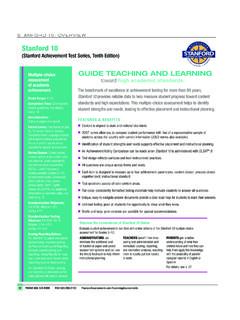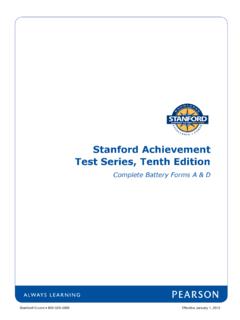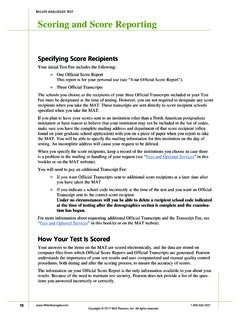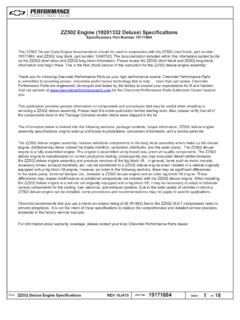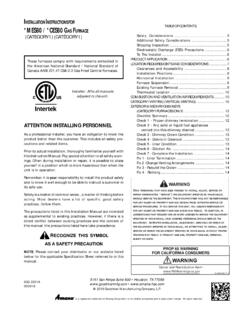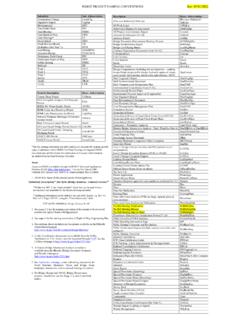Transcription of CELF-4 - Technical Report - Pearson Assessments
1 1 OverviewTheClinical Evaluation of Language Fundamentals Fourth Edition(CELF 4) is an individually administered test for determin-ing if a student (ages 5 through 21 years) has a languagedisorder or delay. It is a revision of the Clinical Evaluation ofLanguage Fundamentals Third Edition, published in 1995, andfeatures updated norms, expanded language coverage, and a new Four-Level Assessment Process Model. CELF 4assesses four aspects of language (morphologyand syntax,semantics, pragmatics, and phonological awareness) and can be administered in 30-60 CELF 4 still includes familiar subtests and traditional diagnostic scores, new features enhance the evaluation process and reduce the time required to determine if a student has a language disorder.
2 New aspects of the CELF 4 include:Four-Level Assessment ProcessWith CELF 4, you now can evaluate a student s general language ability and whether or not a language disorder ispresent by administering only four subtests to obtain a CoreLanguage score. Once you determine that the student has alanguage disorder, you may pursue any of the followingoptions with CELF 4, in any order to evaluate sthe nature of the disorder (strengths, weaknesses, affected modalities, content areas, conditions that enable the student to perform well);sthe underlying clinical behaviors (working memory, automaticity of speech, phonological awareness); orshow the disorder affects the student s classroom performance(authentic assessment with the Observational Rating Scaleand Pragmatics Profile).
3 Revisions in this EditionLevel 1 Identify whether or not there is a language disordernorm-referenced Core Language scoreLevel 2 Describe the nature of the disordernorm-referenced index scoresLevel 3 Evaluate underlying clinical behaviorscriterion-referenced & norm-referenced measuresLevel 4 Evaluate language and communication in contextauthentic and descriptive measures of performance respond to the intent of IDEA for classroom accommodations, adaptations, and enhancementsIdentify whether or notthere is a language disorder (Level 1)Evaluate underlying clinical behaviors (Level 3)Evaluate language andcommunication in context(Level 4)Describe the nature of the disorder(Level 2)The CELF 4 Assessment Process ModelAn alternative approach to using the CELF 4 Assessment Process ModelCELF 4assessment processTechnical Report2 CELF 4 provides a flexible, multi-perspective assessmentprocess for pinpointing a student s language and communica-tion strengths and weaknesses, and for making educationallyrelevant recommendations for intervention and accommo-dations.
4 You can administer the subtests in each of the fourlevels sequentially or select one or more levels to use in any order depending on your evaluation or assessmentobjectives. This model enables you to administer only thesubtests and tasks that respond directly to your objectivesfor assessment and SubtestsCELF 4 consists of 19 subtests. Some are new subtests, othersare revised subtests from CELF 3, and still others are CELF 3subtests that have been maintained without changes. Adescription of each of the new CELF 4 subtests Vocabulary, for ages 5 9 years, enables youto evaluate the student s ability to name illustrations ofpeople, objects, and actions (referential naming).
5 This abilityrelates to preschool, and elementary grade curriculumobjectives for labeling and remembering names for peopleand objects (nouns) and actions (verbs) and using them inacademic contexts in response to pictures, graphs, diagrams,and other illustrations, and in spontaneous language toexpress concise Word Definitions, for ages 10 21 years, you canevaluate the student s ability to analyze words for theirmeaning features, and define words by referring to classrelationships and shared meanings, and describe meaningsthat are unique to the reference or instance.
6 This abilityrelates to upper elementary and secondary grade curricu-lum objectives for knowing and using words as conceptswith broad, generic applications, rather than with narrow,concrete and contextually bound meanings. The ExpressiveVocabulary and Word Definitions subtests enable you toprobe the student s vocabulary Awarenesshelps you evaluate the student s knowledge of the sound structure of the languageand the ability to manipulate sound through (a) rhymeawareness and production; (b) sentence, syllable, andphoneme segmentation; (c) syllable and phoneme blending;(d) syllable detection; and (e) phoneme identification andmanipulation.
7 Phonological awareness skills relate to preschool and elementary-grade curriculum objectives forproducing rhyme and manipulating sounds required forpre-reading and reading. The Phonological Awarenesssubtest was added to strengthen CELF 4 s tie to Pragmatics Profileprovides a profile of a student spragmatic skills with a checklist of descriptive items in threeareas: Rituals and Conversational Skills; Asking For, Giving,and Responding to information ; and NonverbalCommunication Skills. The Pragmatics Profilebroadens the scope of assessment by encouraging teachers and/orcaregivers to participate in the evaluation process.
8 Pragmatics Profilewas added to CELF 4 to help evaluate a child s language Rating Scale (ORS)is now includedwith CELF 4 as a performance-based assessment. It offers 40statements that describe problems a student may have inlistening, speaking, reading, and writing. Parents and teachersrate the student using a 4-point frequency of occurrencescale. The student can evaluate his or her own skills in this area, too. The Observational Rating Scaleprovides information about the student s language in classroom and home contexts. Working Memorycan now be assessed usingFamiliar Sequencesand Number Memory index score and Number RepetitionandFamiliar Sequencessubtests are included to help you explorethe possible effect memory skills may have on a student slanguage disorder.
9 Consider a student s Working Memoryindex score as preliminary screening information to be usedin making decisions about the need for referrals to otherprofessionals who can fully evaluate the student s memoryabilities. Number Repetitionand Familiar Sequencessubtestsbroaden the scope of CELF 4 and provide informationabout working memory CELF 4 subtests provide a measure of specific aspects of language form, content, use, and working memorydepending on the subtest task and the student s subtests are used to make up each composite addition to the Core Language score, CELF 4 providesthe following scores to help you assess your students.
10 Receptive Language index, Expressive Language index,Language Content index, Language Structure index,Language Memory index, and the Working Memory TaskComposite Score FormedAges 5 8 Ages 9 21 Concepts and FollowingThe student points to pictured objects inCore9 12 CoreDirectionsresponse to oral directionsWord StructureThe student completes sentences using Corethe targeted structure(s)Recalling SentencesThe student imitates sentences presented CoreCoreby the examinerFormulated SentencesThe student formulates a sentence about CoreCorevisual stimuli using a targeted word or phraseWord Classes 1 and 2 The student chooses two related word Receptive/ContentCoreand describes their relationshipSentence StructureThe student points to a picture that Receptive/Structureillustrates the given sentenceExpressive Vocabulary*The student identifies a pictured object, ContentContentperson.
